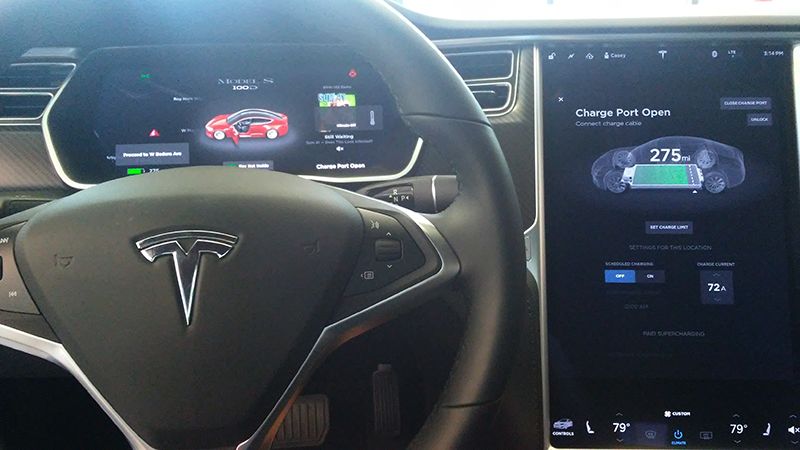EV (Electric Vehicle) vs. ICE (Internal Combustion Engine). The auto industry has not been the same since electric cars. From the beginning it has been a debate. It leads to some very technical discussions among Electrical Engineers vs. Mechanical/Chemical Engineers. Actually all these disciplines are involved in how cars work, whether it is an EV or ICE. I just have to say though that EV has more advantages than ICE. I have 5 good reasons on the advantages EV have over ICE cars.

Zero Emissions — Both EV and ICE emit CO2 as a byproduct of it’s operation, First Law of Thermodynamics. However, EV don’t emit exhaust which pollutes the air. Air pollution is a major issue in big cities, since it degrades air quality and leads to illnesses that affect breathing. That is why EV are more “green”. EV get their power from charging via AC household outlet or from a charging station, no fuel is required. Less dependency on fuel can save driving costs overall, one reason people are buying EV.
EV motors are more efficient. An ICE needs to burn fuel in engine cylinders to drive pistons to operate the driveshaft. Fuel needs to be injected into the cylinders and the spark plugs send current to create sparks that lead to combustion when mixed with the fuel. This is what moves the precise mechanical parts that interlock with the drivetrain. EV don’t need fuel, it generates energy from batteries that drive motors that creates motion. There is no contact between motor and driveshaft, just an electromagnetic field which pushes the driveshaft. Plenty of energy is actually wasted with the conventional ICE, with the wasted energy converted to heat. An engine can also overheat, which is why ICE cars have a cooling system. EV also have cooling systems required for the battery, but they don’t waste as much heat as ICE cars. Electric motors can also function as electric generators. Forward momentum can be captured during braking in order to charge the battery. The rotor in the motors continually spin and during the what is called regenerative braking, when the brakes are activated the electrical field reverses which sends electrons back to the battery. This energy is wasted in ICE cars in the form of heat from friction, whereas EV use that energy to recharge the battery.
EV have more powerful motors. EV have instant torque so no energy is wasted in acceleration. Electromagnetic motors produce instant power to the drive train creating torque that creates forward motion. Depending on the battery capacity, the > current delivered the more powerful the motor. ICE have to undergo mechanical and chemical reactions to work to create torque and final motion. EV deliver more torque than gas engines at lower speeds, but at higher speeds ICE do perform much better. So a modified supercar with a powerful ICE can still outperform an EV. EV’s better torque has a secondary advantage. With less torque at low speeds, gas engines need help from a transmission to get moving. Electric engines by and large don’t need transmissions so gears are not necessary with EV.
Easier and simpler to service. ICE cars require plenty of lubing and oil changes. Maintenance requires plenty of fluids to keep mechanical parts moving. While EV have mechanical parts, like the wheels and tires, they are not as many compared to ICE cars. EV don’t need an oil tank, transmission system or catalytic converter. Less subsystems means simpler maintenance.
More intelligent electronics. More sophisticated electronics and intelligent sensors are at the heart of an EV. They require a different harness for all the wiring and control units installed. As a result you get more accurate and transparent systems that control your driving environment and improve the user experience. It’s basically a computer running the car with a sub-system of sensors and controllers. Fault detection and accident prevention are just some of the features in intelligent systems used in an EV. More accurate controls and instrumentation are the result. It becomes easier to detect faults and know the status of a vehicle. EV are evolving into smart driverless cars because they can be more easily programmed due to their configuration. EV are ready by design since they are highly computerized.
Range is of course the main advantage ICE cars have. However EV are catching up as battery technology continues to improve. Higher capacity batteries allow EV to travel farther between recharging. The first impressions of EV were not so good back in the 90’s. Slowly however they have evolved and continue to do so at a faster rate this time. EV’s are also what make them a more ideal solution for a less fossil fuel dependent future in transportation.
Keep it up your good work :)
Downvoting a post can decrease pending rewards and make it less visible. Common reasons:
Submit
Congratulations @vtce! You have completed some achievement on Steemit and have been rewarded with new badge(s) :
Click on any badge to view your own Board of Honor on SteemitBoard.
For more information about SteemitBoard, click here
If you no longer want to receive notifications, reply to this comment with the word
STOPDownvoting a post can decrease pending rewards and make it less visible. Common reasons:
Submit
Hi! I am a robot. I just upvoted you! Readers might be interested in similar content by the same author:
https://steemit.com/ev/@vtce/2vedqd-5-advantages-of-electric-cars-ev
Downvoting a post can decrease pending rewards and make it less visible. Common reasons:
Submit